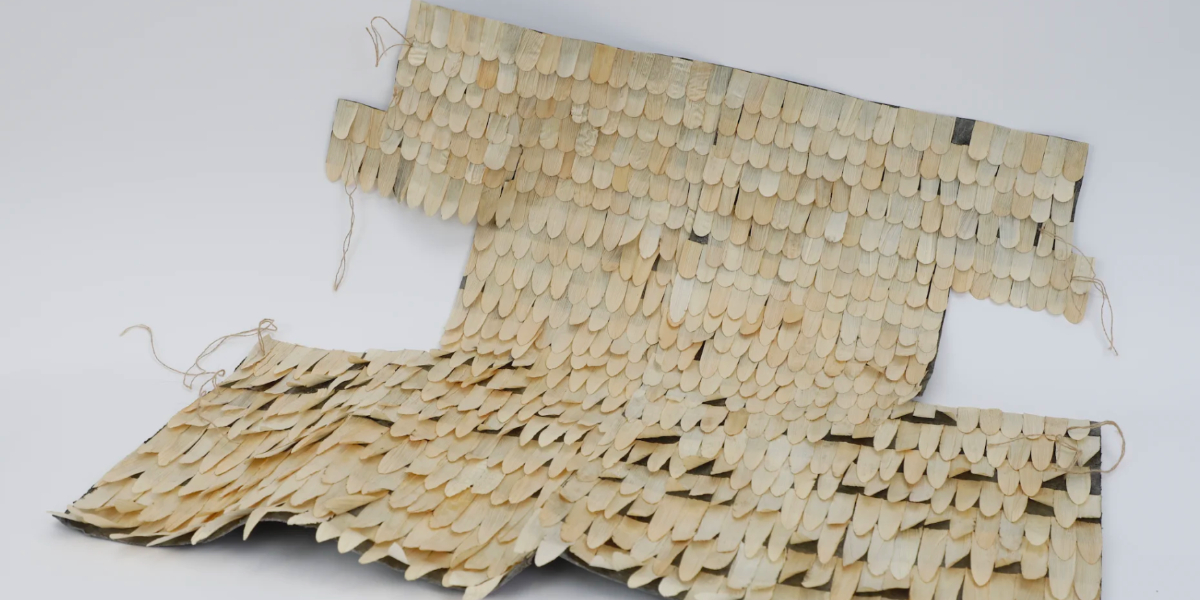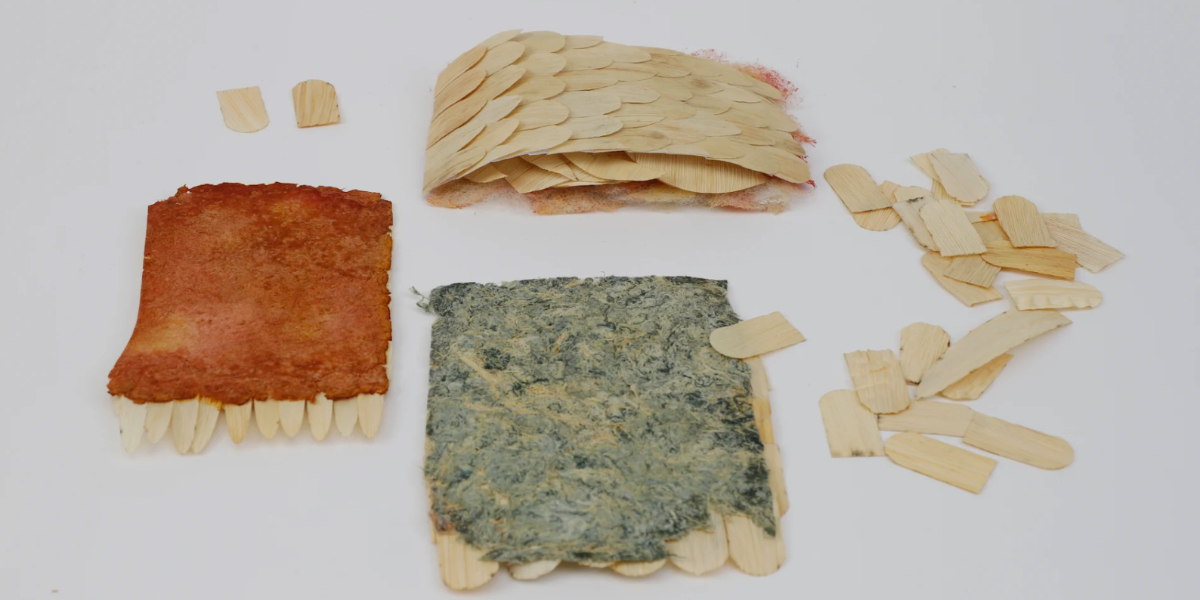AWARD YEAR
2023
CATEGORY
Home
GOALS
Responsible Consumption & Production, Climate Action
KEYWORDS
recycling, natural materials
COUNTRY
United Kingdom
DESIGNED BY
Yu Chen
WEBSITE
https://graduateshowcase.arts.ac.uk/project/222857/cover#final-work-section
‘Mount Tai’ Raincoat
A raincoat made from a mix of waste husks with other biodegradable and sustainable materials.
How does it work?
By combining waste husks with other biodegradable and sustainable materials such as waste paper pulp, the raincoat draws inspiration from the past yet provides practical protection from rain, hopefully minimising corn husk waste and eliminating single-use plastic raincoats. Historically, corn husk waste was woven to create simple and cheap raincoats and hats for agricultural workers due to its low cost, high volume, and unusually water-repellent properties.
Why is it needed?
The burning of waste corn husks was common practice in China until recently banned due to the devastating atmospheric pollution it causes and its impact on human lives. However, with farmers creating millions of tonnes each year and with no apparent methods for disposing of it, this vast waste stream is becoming a severe issue for rural communities, ecologically and financially.
Additionally, this project explores how the vast waste stream could be utilised to replace another problematic Chinese waste product: the plastic rain poncho.
How does it improve life?
Due to increased tourism and the availability of cheap plastics, the traditional craft has been entirely replaced by single-use, non-recyclable plastic ponchos. These ponchos are purchased when it rains, only to be disposed of hours later. Acknowledging these facts, this project seeks to create a new solution against climate change and revive an old craft tradition.





